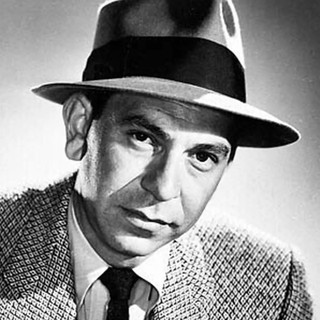Imagine the following scenario: You are driving through Los Angeles when your car is inexplicably struck by another. You pull out of traffic and stop at the side of the road so you can exchange information with the other driver as the law prescribes. In speaking with the other driver, you can see he appears to be under the influence of some intoxicant, as he is agitated, speaking incoherently, and running around in the street. You are relieved to spot a passing police officer, whom you flag down and apprise of events.
“There’s the man who hit me,” you say to the officer. “He’s running around in the street like a lunatic.”
“I’d like to help you,” says the officer, “but the man seems to be mentally unstable. I must call for mental health professionals who will, as if by magic, calm him and restore him to sanity.”
The officer makes the appropriate request by radio, then says to you, “Good news, they’ll be here in an hour.”
“An hour?” you say. “That’s good news?”
“It’s usually much longer,” says the cop, “but they’re only three miles away. But with L.A. traffic, you know.”
And as you and the officer wait by the side of the road, the unstable man continues to dart in and out of traffic.
“He could get hurt,” you say.
“Quite likely,” says the cop.
“Shouldn’t you, you know, do something?”
“Nothing would please me more,” says the cop, “but policies and procedures adopted by my agency forbid it.”
And in due course, before the mental health professionals arrive, the unstable man is struck by a passing car and killed.
“Such a pity,” says the cop, “but at least I can’t be blamed for it.”
Farfetched, you say? No, the day may soon arrive.
The Los Angeles Times is apparently sanguine at the prospect. On Wednesday, in one of its characteristic advocacy pieces masquerading as a news story, the Times reports on efforts to make it so. “Man’s death after tasing reignites debate over LAPD’s role in traffic enforcement,” reads the headline.
The man referred to is Keenan Anderson, who on Jan. 3, after becoming involved in a traffic collision in the Venice area of Los Angeles, was running around in a busy intersection, apparently under the influence of drugs. He was tased, subdued, handcuffed, and taken by ambulance to a hospital where he died hours later. (I discussed the incident in a previous column.)
The story begins thus:
Police say that Keenan Anderson caused the minor traffic collision in Venice that ended with several officers piling onto him and shocking him with a Taser.
His family disagrees. They say Anderson, who died a few hours later, was a victim of the crash and that what he needed in that moment of distress was medical care, not police intervention.
Activists and some City Council members say that Anderson’s death lends even greater urgency to efforts to remove armed police officers from traffic enforcement — a tenet of a nationwide movement to radically transform the criminal justice system that took hold after the murder of George Floyd in Minneapolis nearly three years ago.
There are so many questions raised in just those three paragraphs. Anderson’s family disagrees? Based on what? Did any member of the family witness the crash? Did any of them, or did the reporter, speak to the other parties or to witnesses? If you’re familiar with the L.A. Times, you already know the answers.
A couple of questions may occur to the rational reader: who should have provided the care Anderson needed, and how would they have provided it while he ran amok in a busy intersection?
And how is the issue of traffic enforcement implicated in Anderson’s death in the first place? Do these advocates and City Council members believe the LAPD officers involved in subduing and arresting Anderson should have stood by idly and watched him run in the street while waiting for a mental health clinician to arrive? Who then would have shouldered the responsibility if Anderson had been run over in traffic or simply escaped?
If you need further evidence that the Times story is an advocacy piece, read no further than the first person quoted. It is Patrisse Cullors, a cousin of Anderson and, though it goes unmentioned in the story, a major beneficiary of the BLM real estate windfall. “There is no reason why law enforcement should be the first responders at traffic stops or accidents,” Cullors said.
There are actually many reasons they should, but the reporter apparently wasn’t up to the task of challenging Cullors.
Next comes the canard inevitably raised in stories like this. Activists argue, says the Times, “that communities of color have historically borne the brunt of such enforcement.” Put aside the fact that in Los Angeles, as in every other city, “communities of color” are those where crime is highest. Let’s confine ourselves strictly to issues of traffic safety. In 2022, there were 303 fatal traffic collisions in Los Angeles. The largest number, 35, occurred in 77th Street Division, which is populated almost exclusively by “people of color.” The same division also led the city in collisions resulting in major (but non-fatal) injuries, and it was third in the city in DUI-related collisions.
Should these statistics be ignored so activists can be appeased? Does anyone, even these misguided activists, believe Los Angeles will be safer if the police are prohibited from enforcing the traffic laws?
They don’t, and they don’t care.










Join the conversation as a VIP Member